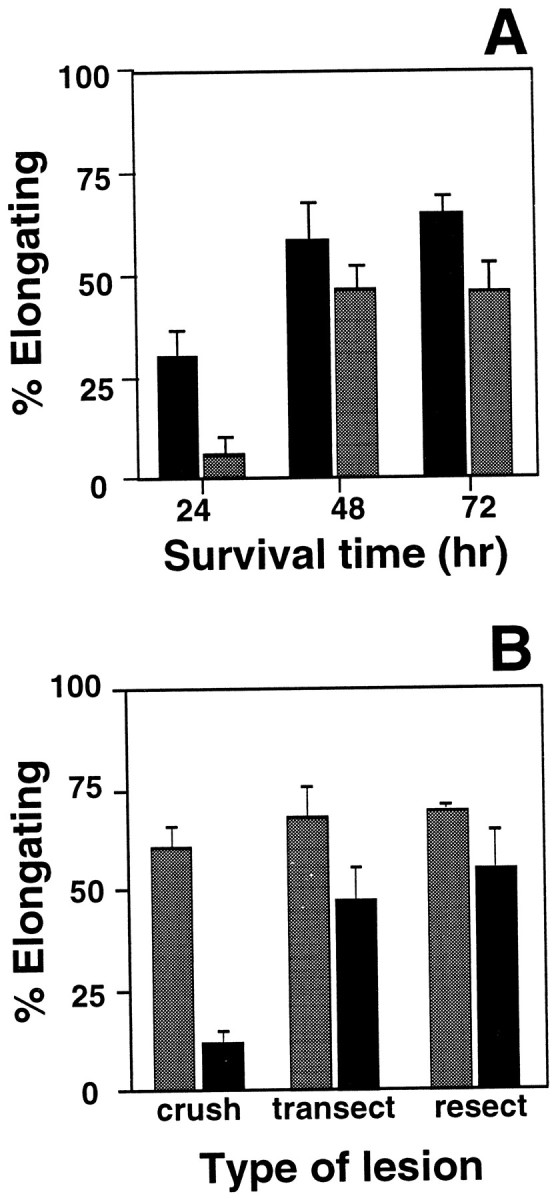Fig. 9.

Competence for elongating growth is regulated by a retrograde signaling pathway(s) activated by contact with peripheral targets. A, The length of the proximal nerve stump affects the timing, but not the extent, of the transition to elongating growth competence. Sciatic nerve crush was performed either 1.0–1.5 cm (black bars) or 5.0–5.5 cm (gray bars) from neuronal cell bodies, and neurons were removed and transferred to tissue culture 24, 48, or 72 hr later. By 48 hr after injury, both proximal and distal lesions produced a large increase in the number of neurons able to extend elongating axons by 16 hr after plating (fewer neurons are injured by the distal lesion, so the maximal response is lower than after proximal injury). The response to proximal crush reaches 45% of the maximum response by 24 hr after injury. In contrast, the response to a more distal lesion by 24 hr is only 12% of the maximum. This may reflect time required for the depletion of retrogradely transported inhibitory molecules in longer proximal nerve segments. Each bar represents the mean ± SD of three separate experiments with duplicate cultures in each experiment.B, Sciatic nerves were subjected to a crush lesion, which permits effective regeneration of axons, or complete transection or resection of a 0.5 cm nerve segment, both of which delay or prevent reinnervation of peripheral targets. DRG neurons were removed 1 week (shaded bars) or 8 weeks (black bars) after injury, and plated for 16 hr in vitro. By 1 week after injury, all three types of lesion had stimulated competence for elongating growth. By 8 weeks after injury, competence for elongation had declined in neurons with crush lesion but remained elevated after nerve transection or resection. Each bar represents the mean ± SD of three separate experiments with duplicate cultures in each experiment.
